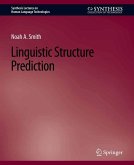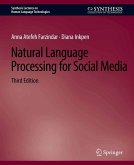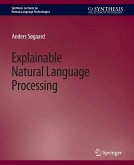Many NLP tasks have at their core a subtask of extracting the dependencies-who did what to whom-from natural language sentences. This task can be understood as the inverse of the problem solved in different ways by diverse human languages, namely, how to indicate the relationship between different parts of a sentence. Understanding how languages solve the problem can be extremely useful in both feature design and error analysis in the application of machine learning to NLP. Likewise, understanding cross-linguistic variation can be important for the design of MT systems and other multilingual applications. The purpose of this book is to present in a succinct and accessible fashion information about the morphological and syntactic structure of human languages that can be useful in creating more linguistically sophisticated, more language-independent, and thus more successful NLP systems. Table of Contents: Acknowledgments / Introduction/motivation / Morphology: Introduction / Morphophonology / Morphosyntax / Syntax: Introduction / Parts of speech / Heads, arguments, and adjuncts / Argument types and grammatical functions / Mismatches between syntactic position and semantic roles / Resources / Bibliography / Author's Biography / General Index / Index of Languages
Dieser Download kann aus rechtlichen Gründen nur mit Rechnungsadresse in A, B, BG, CY, CZ, D, DK, EW, E, FIN, F, GR, HR, H, IRL, I, LT, L, LR, M, NL, PL, P, R, S, SLO, SK ausgeliefert werden.









